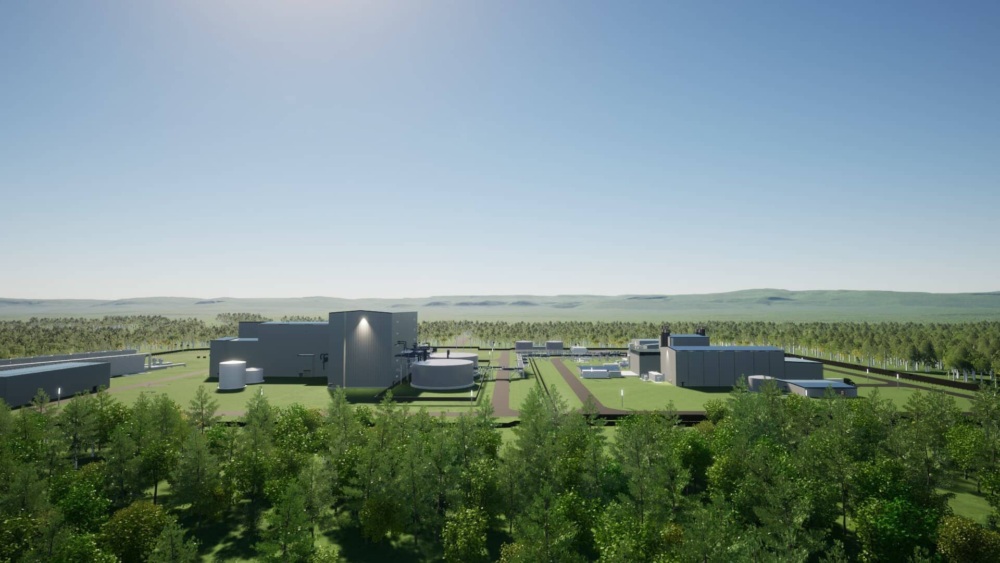The latest
The first US small modular reactor (SMR) is expected to break ground soon. Bill Gates’ TerraPower announced plans to begin constructing its advanced sodium fast reactor Natrium in June 2024 in Wyoming. This is a major milestone for the US nuclear industry, especially after last year’s cancellation of the NuScale project in Idaho.
Relevance
Nuclear technology is gaining importance for geopolitical, climate, and development reasons.
- The US and 24 other countries have pledged to triple global nuclear power to provide zero-emission firm power.
- Smaller, safer, and more flexible models such as SMRs and microreactors are likely to be especially attractive in emerging markets to boost economic growth and support industry.
- The US is already far behind Russia and China. Russia has far more nuclear agreements and has already deployed a floating SMR in Pevek. China operates an SMR in Shidao Bay.
The urgency
Fixing the financing gap. Despite likely demand for nuclear power in Asia and Africa, development institutions that finance infrastructure are not yet ready for nuclear technology. Because the lead times for nuclear deals are long, and countries need time to prepare to adopt and oversee the technology, the market could move faster than policy. It’s not too early for the financing agencies to catch up.
Which next-generation nuclear models to watch? And when will they come to market?
Several leading US advanced nuclear developers are on pace to launch demonstration projects by the end of the 2020s. It can be hard to keep track, so we’ve summarized public information on seven promising US companies that we’re keeping an eye on.
TerraPower
- Model: Natrium
- Technology specs: 345 MWe sodium fast reactor combined with a molten salt energy storage system developed in partnership with GE Hitachi and with the support of the Department of Energy.
- Expected demo project launch: Construction application submitted in March of 2024 for June 2024 construction start.
- Expected commercial launch: 2032
BWX Technologies
- Models: Project Pele and BANR
- Technology specs:
- Project Pele is a 1-5 MWe microreactor produced in collaboration with the Defense Department’s strategic capabilities office. It uses Tri-structural Isotropic (TRISO) fuel and can be transported using truck, rail, ship, or a C-17 cargo plane.
- BANR is a 50 MWe high-temperature gas reactor SMR that does not require extensive nuclear fuel handling facilities and storage due to its modular refueling compatibility. The reactors and accompanying infrastructure can be transported via truck, rail, or ship.
- Expected demo launch:
- A Project Pele prototype is expected to be delivered to Idaho National Laboratory (INL) in 2024.
- BANR’s viability is being evaluated under a two-year, two-phase contract between BWXT and the Wyoming Energy Authority. The assessment will determine the nuclear reactor’s viability as a source of energy alongside existing power generation sources.
- Commercial launch: N/A
GE Hitachi
- Model: BWRX-300
- Technology specs: 300 MWe water-cooled, water-moderated version of GE’s legacy nuclear reactor design that uses a common fuel. Since the BWRX-300 is a smaller reactor design similar to an already-approved nuclear reactor design, GE has stated that the Nuclear Regulatory Commission has already approved 80 percent of its components.
- Expected demo launch: 2028 for Ontario Power Generation (Canada) with later pilots for Tennessee Valley Authority (USA) and Synthos Green Energy (Poland).
- Commercial launch: N/A
Kairos Power
- Model: KP-FHR
- Technology specs: 140 MWe fluoride salt-cooled reactor that uses TRISO fuel.
- Expected demo launch: A low-power demo reactor is scheduled to be operational in East Tennessee in 2026.
- Expected commercial launch: N/A
Oklo
- Model: Aurora Powerhouse
- Technology specs: 15-50 MWe liquid metal-cooled fast reactor that can be fueled by recycled fuel.
- Expected demo launch: Oklo aims to deploy its Aurora Powerhouse in Southern Ohio in 2028. A US Air Force agreement to supply Oklo’s reactor to Eielson Air Force Base in Alaska was rescinded and is going to be rebid.
- Expected commercial launch: N/A
X-energy
- Model: Xe-100
- Technology specs: 80 MWe reactor that can be scaled into a 4x solution to create a 320MWe power plant. The Xe-100 uses TRISO fuel and has extensive passive safety features.
- Expected demo launch: Regulatory approval submission planned for 2024 with construction starting in 2026 and operations in 2029 for Dow Chemical plant in Texas.
- Expected commercial launch: 2029 or 2030
Holtec
- Model: SMR-300 and SMR-160
- Technology specs:
- SMR-300 is a small modular pressurized water nuclear power plant producing 300MWe. It uses steam to make power in a conventional Rankine power cycle and features passive safety features.
- SMR-160 is a 160MWe reactor. It relies on gravity for critical safety systems.
- Expected demo launch: The company plans to submit in 2026 for construction permits for two SMR-300 reactors at the Palisades Nuclear Plant site (Michigan, US), with commissioning in by the mid-2030s.
- Expected commercial launch: Holtec’s SMRs could start construction in the UK in 2028, and deployments are planned for 2029 in Ukraine and 2032 in the Czech Republic.
Conclusion
It’s not too soon. Within the next five years, multiple new nuclear demonstration projects will launch, bringing commercial offerings closer to the marketplace. Countries considering advanced nuclear to meet their future electricity (and process heat) needs should watch these trends closely, and begin securing the necessary long-term investment. Financing agencies, such as the World Bank and US Development Finance Corporation, should get ready too.
Featured image: A rendering of Terrapower’s Natrium model (image credit: Terrapower).


